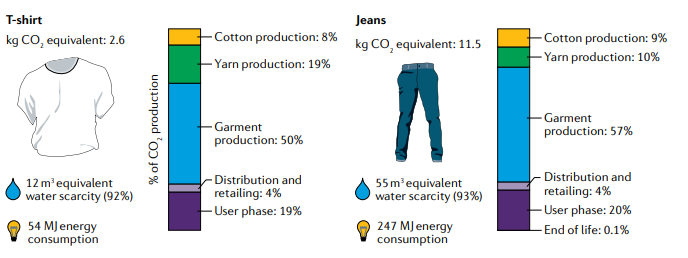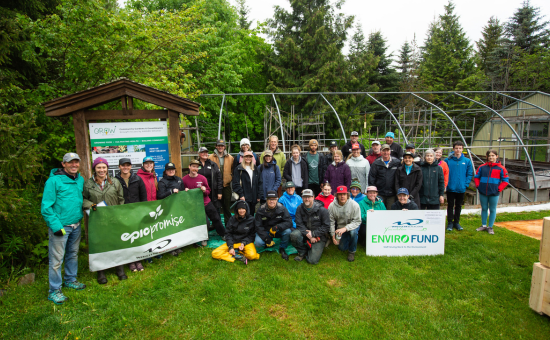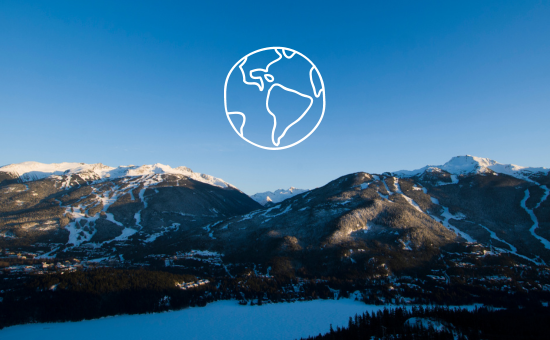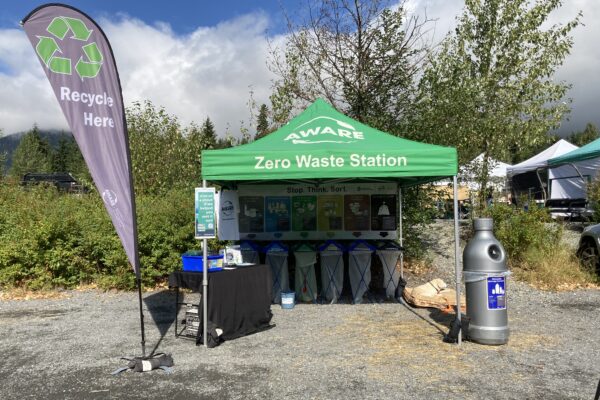Choosing to reuse isn’t just about reducing single use plastics.
The fashion industry currently produces 4-5 billion tons of CO2 emissions annually: That is 8-10% of global CO2 emissions, and is on track to increase with population growth.
The diagram below illustrates the carbon footprint of a couple of new items of clothes: a new shirt contributes about 2.6 kgs of CO2 emissions, while a new pair of jeans contributes 11.5 kgs.

researchgate.net/the_environmental_price_of_fast_fashion
The Good Side of this Story
For every pair of used jeans you buy, you save those 11.5 kgs of emissions! This gives you the opportunity to feel good about buying when you purchase re-used goods!
When you purchase or swap for new-to-you items, you do so without creating CO2 emissions, polluting more water, or creating a higher demand for valuable agricultural soil and space. Similarly, when you give away your pre-loved goods, you save them from being stuck in a landfill and preserve the materials for reuse. Join the movement- Buy and Sell Reused!!
More Facts:
The fashion industry also:
- Consumes 79 trillion litres per year of our world’s clean water
- Creates ~20% of industrial water pollution (from textile treatment and dyeing)
- Contributes 190,000 tonnes per year of oceanic primary microplastic pollution (~35% of total)
- Produces >92 million tonnes per year of textile waste, much of which ends up in landfill or is burnt, including unsold product. (ResearchGate.net, The Environmental Price of Fast Fashion)
Suggested Carbon Budget for New Personal Items
Do you think you could buy only 3 new pieces of clothing in a year? This is the number suggested to equalize a carbon budget for all humans around the world. Imagine that- there are some people who would be thrilled to have three new items, and don’t they deserve them?
Are you willing to try? Tag friends and businesses who also promote buying and selling of used goods so we can share our knowledge and support local businesses doing well for our environment and community. Thanks for reading!



